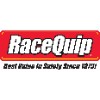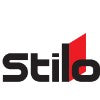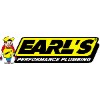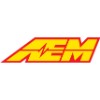Haltech - Rebel LS
Nexus Rebel LS – Product Overview

Haltech Rebel LS Kits are built for one job. Get an LS running cleanly in a swap car without living in wiring purgatory. An LS conversion should be about packaging the engine, cooling it, and enjoying the torque. It should not be about chasing down a 20-year-old PCM fault or cutting factory looms until nothing works. The Rebel approach is tidy. You receive a modern ECU, a purpose-built harness, and the bits that remove guesswork so the engine fires, idles, and drives like a well-mapped modern powerplant.
Start with compatibility. The kits support the common Gen 3 and Gen 4 engines. LS1, LS2, LS3, L98, L76, L77, LSA, and the iron truck variants like LQ4 and LQ9. Cable and drive-by-wire are covered. There are provisions for the OE pedal or a recommended pedal that mounts neatly in retro chassis. Injector connectors, coil plugs, cam and crank trigger styles, and alternator control are all addressed. You do not have to juggle mismatched sensors or cobble together adapters.
The harness is the heart of the kit. Lengths are sensible for front-engine, rear-wheel-drive conversions, with robust sleeving and heat protection. Crank and cam are shielded and twisted. There are labelled breakouts for oil pressure, flex fuel, fuel pressure, and intake air temperature. A clean bulkhead pass-through keeps the cabin free of fumes and noise. The main relay and fused feeds are included so you do not spend days designing basic power distribution.
Base calibration matters. Each Rebel LS Kit ships with a start-up map for common injectors and standard cam timing. Idle control is set for stock or mild cams and can be refined with the ECU’s idle timing control. Drive-by-wire variants include the correct pedal and throttle calibration. That means cold start is predictable, hot restart is instant, and the first road drive feels like a finished car rather than a project still in the shed.
Modern strategies are built in. Closed-loop wideband control keeps lambda on target. Knock detection pulls timing only where needed. Boost control tables are ready if you add turbos down the line. Flex fuel is simple. Fit the sensor, enable the blend tables, and the ECU interpolates fuel, timing, and boost between petrol and E85. Launch control and flat-shift can be enabled for track use. Cruise control is available on DBW configurations for road comfort.
Transmission options are flexible. Manual boxes like T56 and TR6060 require only a reliable vehicle speed source and a clutch switch for the best launch and flat-shift behaviour. For auto cars, you can retain a separate TCM where appropriate or move to a motorsport-grade transmission controller. The Rebel loom provides the signals the controllers expect, and CAN integration keeps the dash and data in sync.
Cooling and ancillaries are cleanly managed. There are dedicated outputs for dual fans with proper hysteresis, for an AC clutch if you keep air conditioning, and for fuel pump prime. Safety is standard. Oil pressure versus RPM limits protect the engine. Over-temp triggers warning and fan priority. Battery voltage trims injector deadtime for a stable idle with high-output alternators.
Dash integration is straightforward. The ECU broadcasts over CAN to Haltech dashes for real-time channels, alarms, and logging. If you run a third-party dash, a selectable CAN template keeps the channels consistent. Logging on the ECU or dash captures the data needed to diagnose teething problems or tune a cammed setup to behave in traffic.
The result is simple. A Rebel LS Kit gives you a modern ECU on a neat loom that fits, starts, and scales. It turns an LS swap into a calm, methodical install with room to grow into forced induction or ethanol later. You get OEM-grade manners with motorsport control and an engine bay that looks like it belongs.
Let’s look at what the Rebel LS is, and what it isn’t.
If you’re looking for a Plug’n’Play ECU for a late-model LS-powered vehicle, this isn’t the ECU for you. It does not connect to any factory wiring harnesses, and it won’t communicate with a factory communication network (known as the CAN network) so the dash, ABS, and body control module would not work as expected. It is though, an Engine Management System and Terminated Engine Harness package that provides a very cost-effective and simple solution to get your Gen III or Gen IV General Motors LS engine up and running in your special project.

It’s only if you plan on interchanging Gen III and Gen IV parts on your engine would you need to grab any extra breakout harnesses – everything required is included in each kit.
However, if you do need any part of the wiring harness, each part of the harness is part-numbered and can be purchased as a replacement part separately.
Flexibility is built-in with the Breakout Harness System
The beauty of our breakout harness system is that if you want to add drive by wire to your Gen III (normally a cable-throttled engine) you can simply grab the Gen IV DBW throttle breakout and Corvette Pedal breakout, plug them in, and away you go.
The same goes for converting from EV1 to EV6 injectors or swapping alternators – there‘s no need to be cutting into wiring harnesses or booking in at the auto electrician.

What is the difference between the Nexus Rebel LS and the Nexus R3?
One of the biggest differences between the R3 and the Rebel LS is the ability to configure different pins and wires to do virtually anything, and while that’s great for flexibility, it’s a little more time-consuming and does leave room for error.
With this in mind, we’ve set up the Rebel LS with dedicated inputs and outputs that don’t require configuration and work as intended right out of the box. Every wire in the harness is labelled and configured in the software so there’s no chance of a setup or configuration problem.

There’s simply no need to spend hours working on a pin-out, or assigning pins and functionality in the software. Just read the labels on the harness and plug them into the associated device. Having dedicated inputs and outputs has allowed us to keep hardware and wiring harness costs down, allowing us to pass that cost saving onto you.
But, we know that if you’re putting an LS into your project car there will always be a level of customization, so we’ve included some configurable channels.
• 1x 25amp output
• 5 x digital outputs
• 4 x digital inputs
• 2 x analogue inputs
These are user-configurable and extra to the inputs and outputs required to run the engine.

Now, let’s take a look at the ECU itself. It looks a lot like the R3, and again, we’ve done that to keep the costs down, but inside it’s been designed specifically for the LS engines. The only visual difference is the use of the screw terminals over the Surlok connectors found on the R3. Surloks can be hard to come by, so we’ve done this for ease of use.
On the transmission side of things the harness includes the electrical connector for the T56 speed sensor, but you could run any manual gearbox or mechanically shifted automatic transmission like a Powerglide or TH400.
We will be adding support for popular electronically controlled transmissions in the future and they will integrate with the current harness system.
The Rebel LS has a “CAN” communication network that allows communication with all the popular Haltech CAN devices like the iC-7 Dash, 8 and 15 Button Keypads, and the Power Distribution Modules or PD-16s. In fact, you could connect up to 4 PD-16 units and have the entire car including headlights and tail lights controlled through the ECU avoiding the need for external fuses and relays.

Setup Wizard
As for the software, there’s a setup wizard that runs when you first go online with the ECU.
It asks for a little information about your particular setup then it builds the Fuel and Ignition maps, as well as makes setup changes depending on the configuration.
It’ll ask things like which variant of engine you’re using, what’s the compression ratio, what camshaft you are using, what injectors, and which coils. Asking you to let us know which components are in play, so we can build the closest tune file for your combination.

The Rebel LS ECU is equipped with advanced long-term learning which allows it to monitor the Air to Fuel ratio, the ignition table, and knock detection feedback as well as idle quality and continually make adjustments in the background. The longer the engine runs the better the tune-up gets!
You can go online with the Nexus NSP software and make tuning changes just like you’re used to with the rest of the Haltech range, but there is certainly no need to – The setup wizard takes care of it all!

The Rebel LS is also compatible with the “Haltech Connect App”.
This app allows you to monitor data in real-time on your smartphone or tablet, as well as make tuning and setting changes (like adjusting your rev limit or launch control RPM) as well as check and clear trouble codes or do a little data logging.












